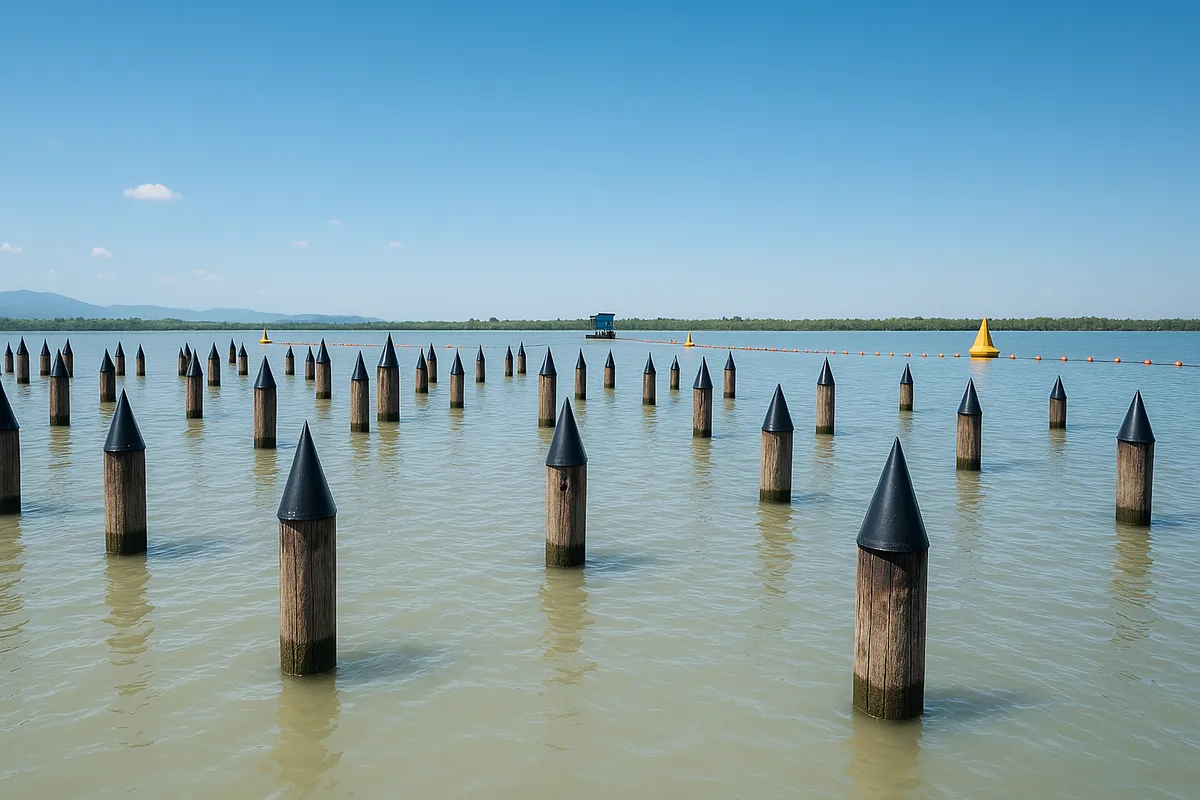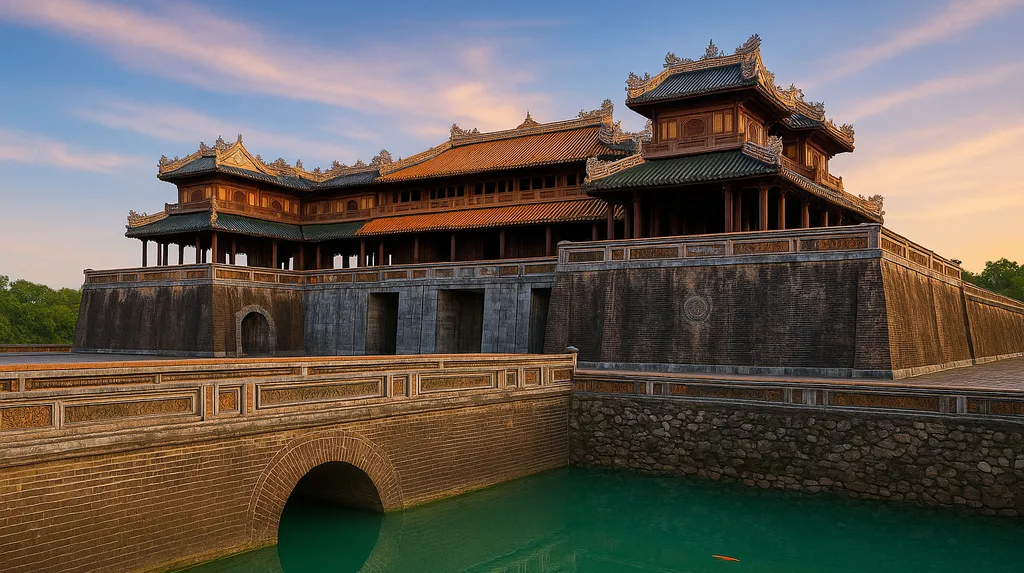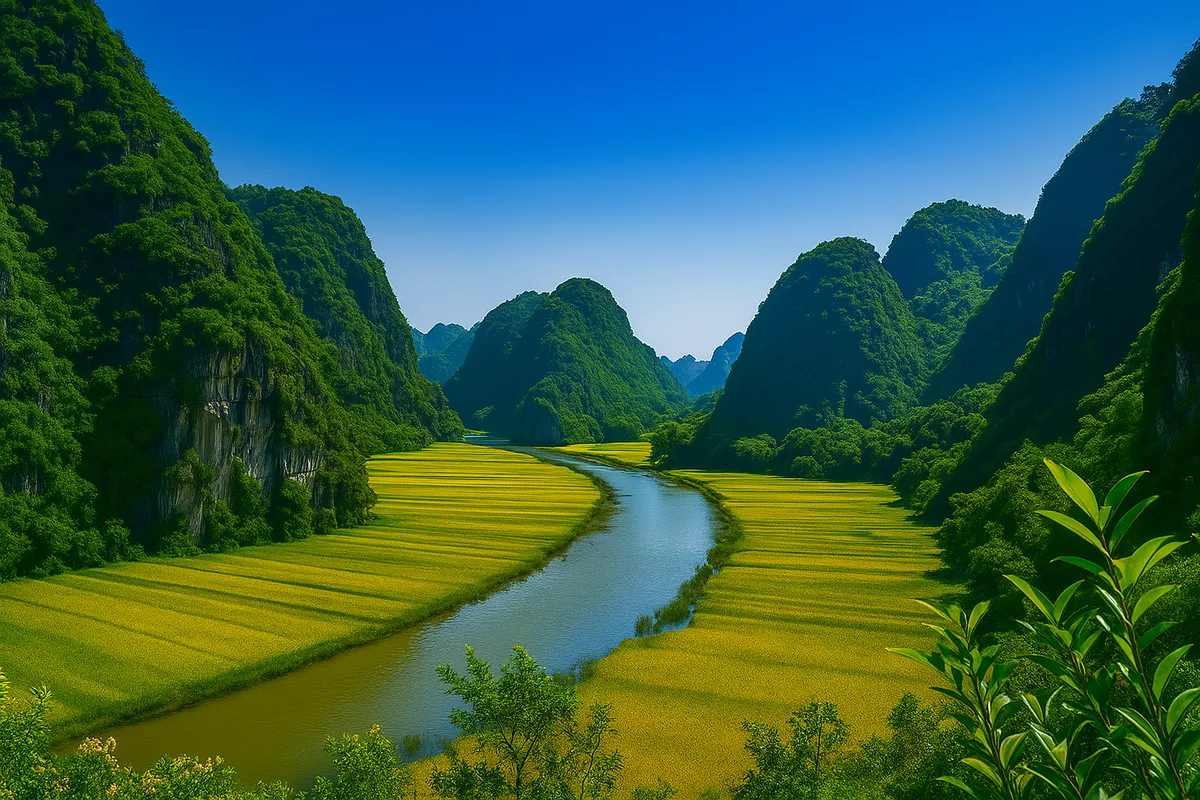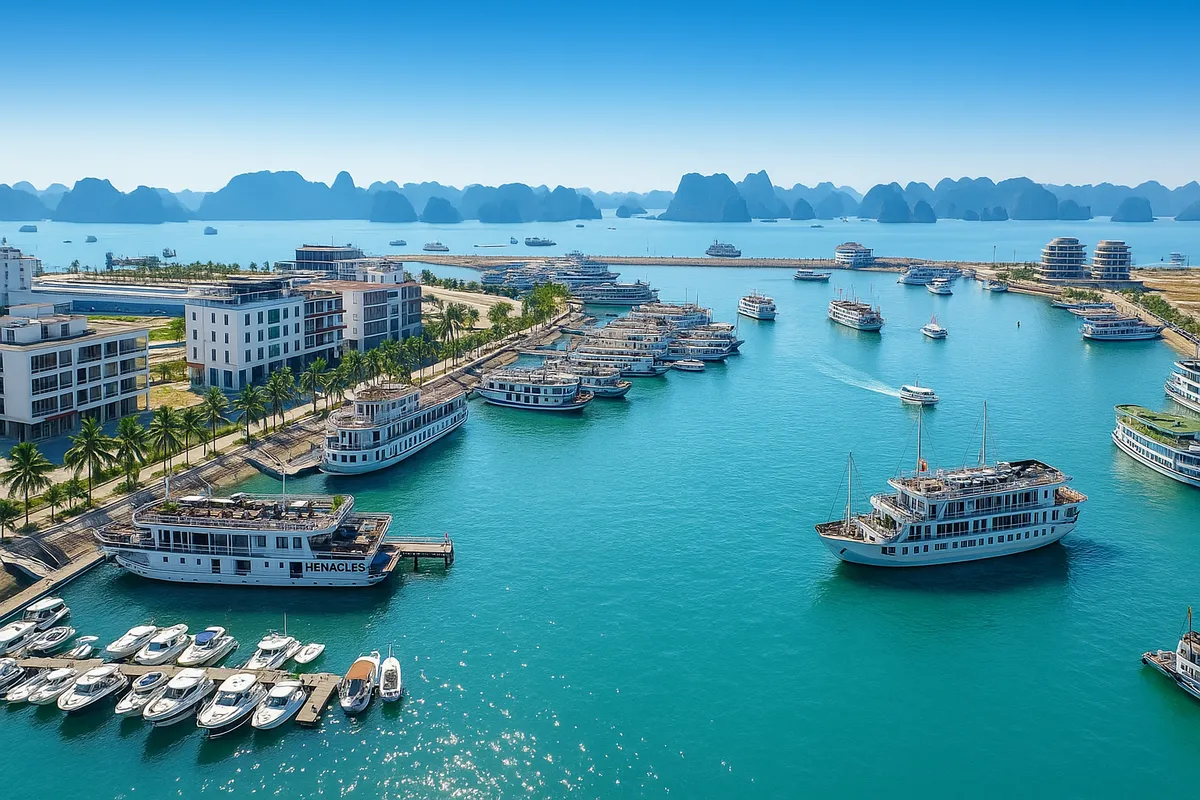Bach Dang Giang relic site is a place you should visit at least once
- Wednesday, Jun 04, 2025, 21:42 (GMT+7)
Bach Dang Giang relic site is a place you should visit at least once
The Bach Dang Giang relic site is one of the most exceptional and meaningful historical spaces in Vietnam. It is where three legendary victories on the Bach Dang River are preserved through physical symbols, architectural structures, and the collective memory of a nation. Located in Minh Duc Town, Thuy Nguyen District, Hai Phong City, this expansive complex is not simply a tourist destination. It serves as a living testament to the spirit of national defense through three dynasties. Every element here speaks through stone, bronze, water, and a deeply rooted spiritual presence.
At the central square, visitors are immediately immersed in a solemn atmosphere. Three towering bronze statues, nearly eleven meters high, represent the national heroes Ngo Quyen, Le Dai Hanh, and Tran Hung Dao. They stand facing the historic river as if eternally watching over the nation’s border. This layout forms a powerful visual and emotional connection between past and present. It is not just a commemorative gesture but a striking declaration of national pride and resilience.
Each temple within the complex tells a story. The temple of Ngo Quyen commemorates the general who defeated the Southern Han and ended over a thousand years of foreign rule. The temple of Le Dai Hanh recalls a ruler who inherited and elevated the riverine spike defense tactic to repel the Song invasion. The temple of Tran Hung Dao honors the military genius who turned the river into an impenetrable battlefield against the Mongol Empire. These are not simply places of worship. They are expressions of strategic thought, national will, and the enduring identity of Vietnamese people.
One of the most symbolic structures is the Victory Pillar. This monolithic piece of ruby-colored stone stands over five meters tall and weighs nearly one hundred tons. It is carved with one hundred and eight ancient characters, each representing elements of cosmic balance and spiritual forces. The stone was transported from the distant Nam Truong Son mountains in a journey that took months. The effort behind its placement reflects the intention to create not only a monument but a spiritual focal point that aligns heaven, earth, and humanity.
The Truc Lam Trang Kenh Pagoda offers a contrasting serenity. Inspired by the famous Dong Pagoda on Yen Tu Mountain, it reflects the spirit of the Truc Lam Zen tradition. With its moss-covered roofs, ancient stone steps, and the gentle echo of bells in the wind, this sacred space encourages visitors to pause, breathe deeply, and reconnect with a quieter state of mind. It is not only a religious site but also a sanctuary for contemplation.
Another highlight is the reconstructed model of the Bach Dang riverbed, featuring hundreds of wooden stakes rising from a still body of water. These are not just replicas of a military tactic. They are visual representations of one of the most intelligent battlefield strategies in Vietnamese history. The stakes reveal how intellect and resourcefulness turned natural terrain into a decisive advantage, creating a story of victory that resonates across generations.
A lesser-known yet profoundly meaningful structure is the temple dedicated to President Ho Chi Minh. Its presence in this complex serves as a symbolic continuation of Vietnam’s enduring struggle for sovereignty. The temple is modest in design but rich in emotion. Standing before it, visitors often fall silent, sensing the presence of a leader who personified modern Vietnamese unity and patriotism. His role completes the historical arc presented throughout the site.
The entrance of the complex features a carefully arranged stone garden with a tall central pillar engraved with the phrase "Bach Dang gathers the nation’s prosperous energy." This inscription is more than poetic. It emphasizes the geomantic importance of the site and its central role in the country’s historical development. Beyond the entrance lies a space without litter, commercial activity, or loud noise. Everything is preserved with care and intention, creating the feeling of entering a sacred open-air sanctuary.
The site does not charge an entrance fee. There are no ticket booths, no shops, and no advertisements. These policies are not about convenience. They reflect a conscious choice to preserve the site’s spiritual and cultural integrity. Visitors come not to consume but to reflect. This philosophy sets Bach Dang Giang apart from other heritage destinations and reinforces its authenticity.
Several major festivals are held at the site throughout the year. These commemorate the anniversaries of the three great heroes: Ngo Quyen in the first lunar month, Le Dai Hanh in the third lunar month, and Tran Hung Dao in the eighth lunar month. During these events, thousands gather to light incense, attend rituals, and reconnect with their shared heritage. These occasions go beyond remembrance. They are moments of community and cultural reaffirmation.
The site is designed following traditional geomantic principles. The mountain behind provides natural support, while the river in front symbolizes prosperity and flow. Sacred buildings are placed on elevated and open terrain, with paths winding gently through trees and gardens. Every detail, from stone railings to carved tiles and lantern posts, reflects a dedication to craftsmanship and cultural continuity.
Young visitors often find themselves unexpectedly moved. They slow their steps, read inscriptions, and examine architectural details. Without being told, they sense the magnitude of what surrounds them. The place itself becomes the storyteller. No narrative is needed. The silence, the air, the shadows all speak on their own.
Photographs cannot capture what it feels like to walk through this space. Videos cannot convey the weight of the past hanging in the air. To visit Bach Dang Giang is to witness history not as something distant or abstract but as something present, tangible, and alive.
Bach Dang Giang is not a destination to tick off a list. It is a place every Vietnamese should experience at least once in their lifetime. Here, the past is not narrated. It breathes through stone and river, forest and prayer. Those who do not come now may one day regret missing the chance to stand in a place where heritage and national spirit are held in the highest regard. This is not only a relic. It is a living emblem of Vietnamese identity.

 CHECKIN.VN
CHECKIN.VN








Share on